- 2nd and 10 +
- 3rd and 3-5
- 3rd and 6-12
- 3rd and 13+
The thing to note here is that while 3rd Downs are obviously important, they are not necessarily a measure of offensive success (Turnovers, Explosive Plays, Scoring Zone TD %, and 1st Down efficiency are all more tangible metrics of a dominant offense). This is because the difference between the BEST 3rd Down team and the WORST 3rd Down team is often negligible -- NO ONE is good on 3RD and 12+. Where an offense can make a difference is in the 3rd and short/3rd and meduim categories. This article is about some simple ideas for making the most of these opportunites. Again, from the first article, our mythical defense is a Cover 2/4 team...
In 2nd and 10+, the main objective is to get HALF THE DISTANCE to the first down; this way, the offense would be back on schedule with a manageable 3rd Down. This is, of course, nothing new. What I would like to offer are some ideas for making the defense play a bit more conservatively than one would think in 2nd and Long from a reaction standpoint.
Many teams dedicated zone teams will revert to their base defense in this situation, or use this as an opportunity to come after the QB via zone blitz. I see the latter as a great opportunity for the offense on 2nd Down because contrary to popular belief, fire zones are intended to make the ball come out fast (not sacking the QB); since the goal is half the yardage; this could be achieved with proper anticipation and planning.
One example of a call to consider would be something like this:
If the defense elects to play 2 high, we work the multiple receiver side combination, which should feature an easy completion to Y if Mike carries with the H. One should also notice the personnel on the field; on 2nd down, the presence of a TE/ H-back body, could help keep a defense in 4-down base personnel, rather than substituting a 3 down defense.
The popularity of "packaged" calls can also fit nicely in this situation. Though not a dropback pass, the action below can will tie in to SCORING ZONE PASS applications:
While Stack/ Bunch is often thought of as a man to man principle, our teams have come to use it to PREDICT a zone defense - teams will often check to a BANJO or zone principle to avoid getting rubbed off. As a result, we can get softer zone throws than we would against standard width formations.
1. It gives a EMPTY look, while still having a 6 man protection (More on EMPTY in the Scoring Zone)
2. The formation system allows to get a bunch alignment AWAY from the TE, so the S and W can both be attacked (Strong LB from standard Bunch)
3. No new assignments for the offense!
Another thought in regard standardizing coverage is to use the RAM principle once again, throwing opposite the drop of the MLB:
As the yardage needed for the first down gets into the 10 or more range, ZONE BLITZ must be a part of the offensive plan. Naturally, 7 man protections are desireable from certain personnel groups; the ability for the QB (or OC in the booth) to make protection checks is of the utmost importance. Once again, the use of no huddle tempo can be an effective weapon. Picture the possibilities with 4 VERTICALS because the QB is able to re-direct his blockers...

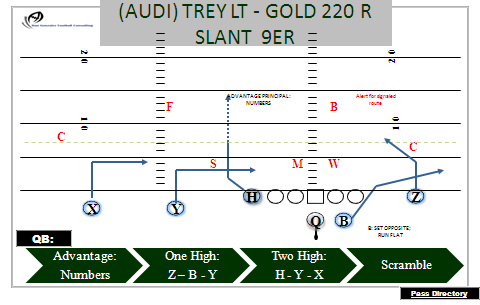
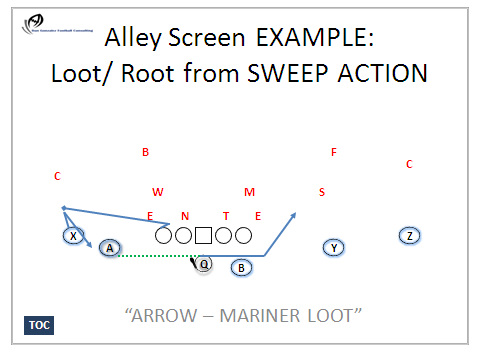
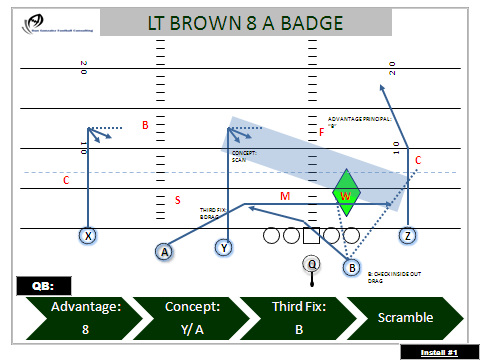
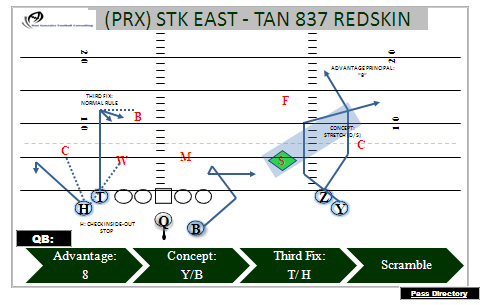
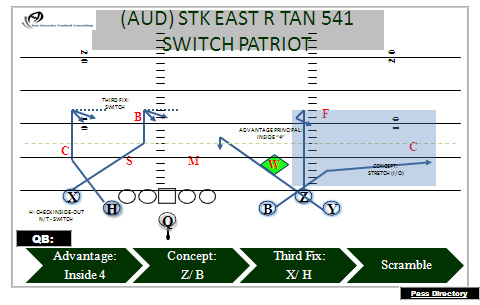
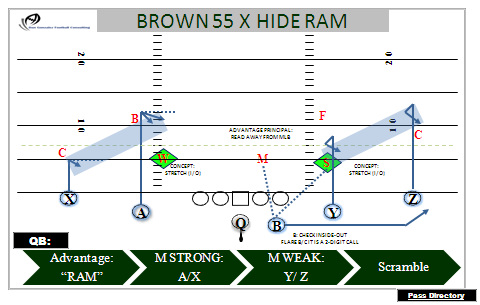
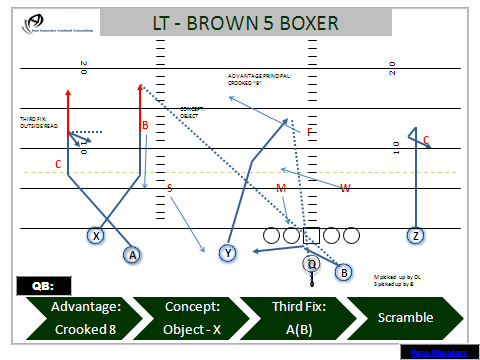
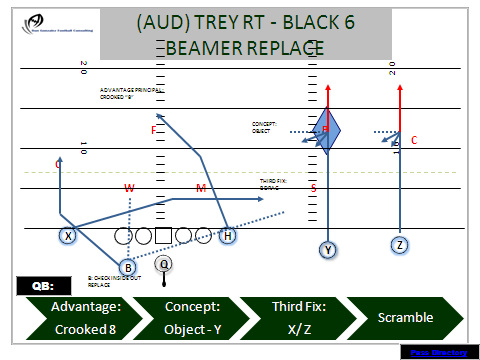
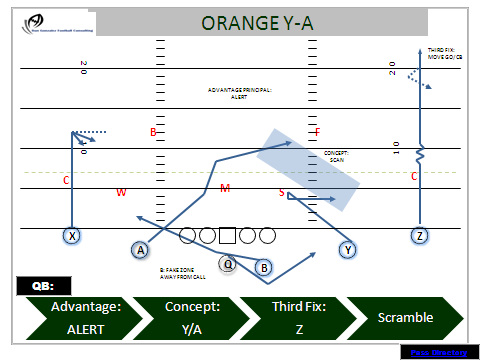
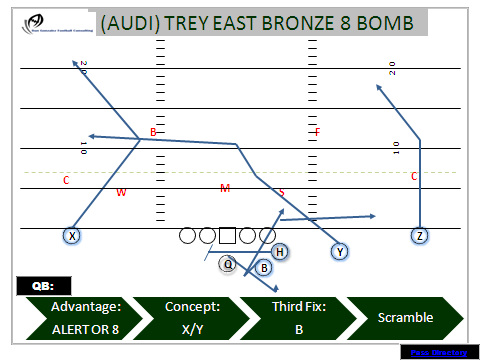
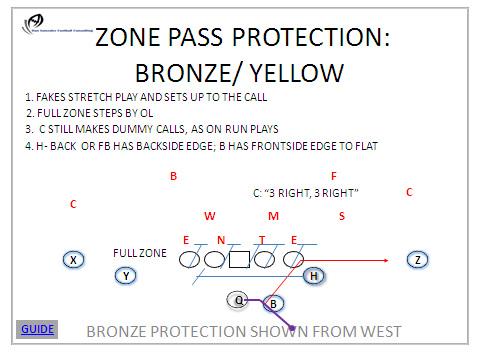
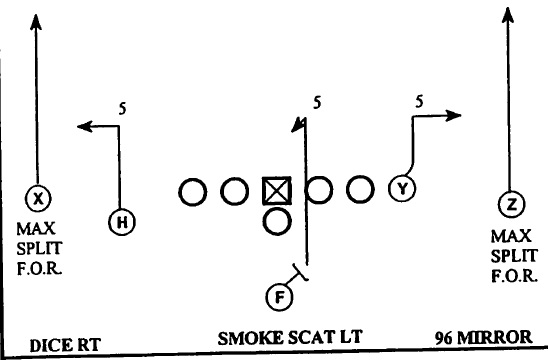
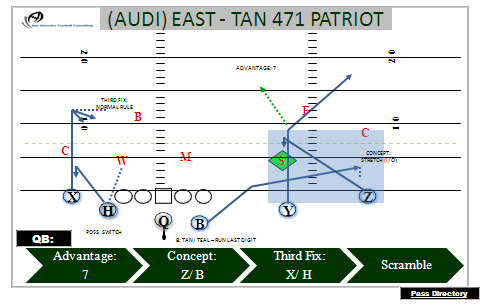
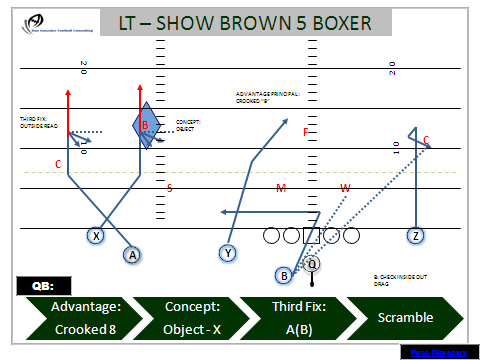
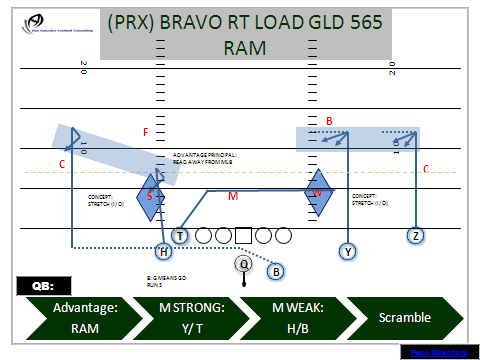
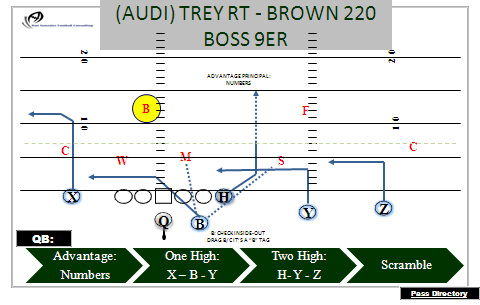

 RSS Feed
RSS Feed
